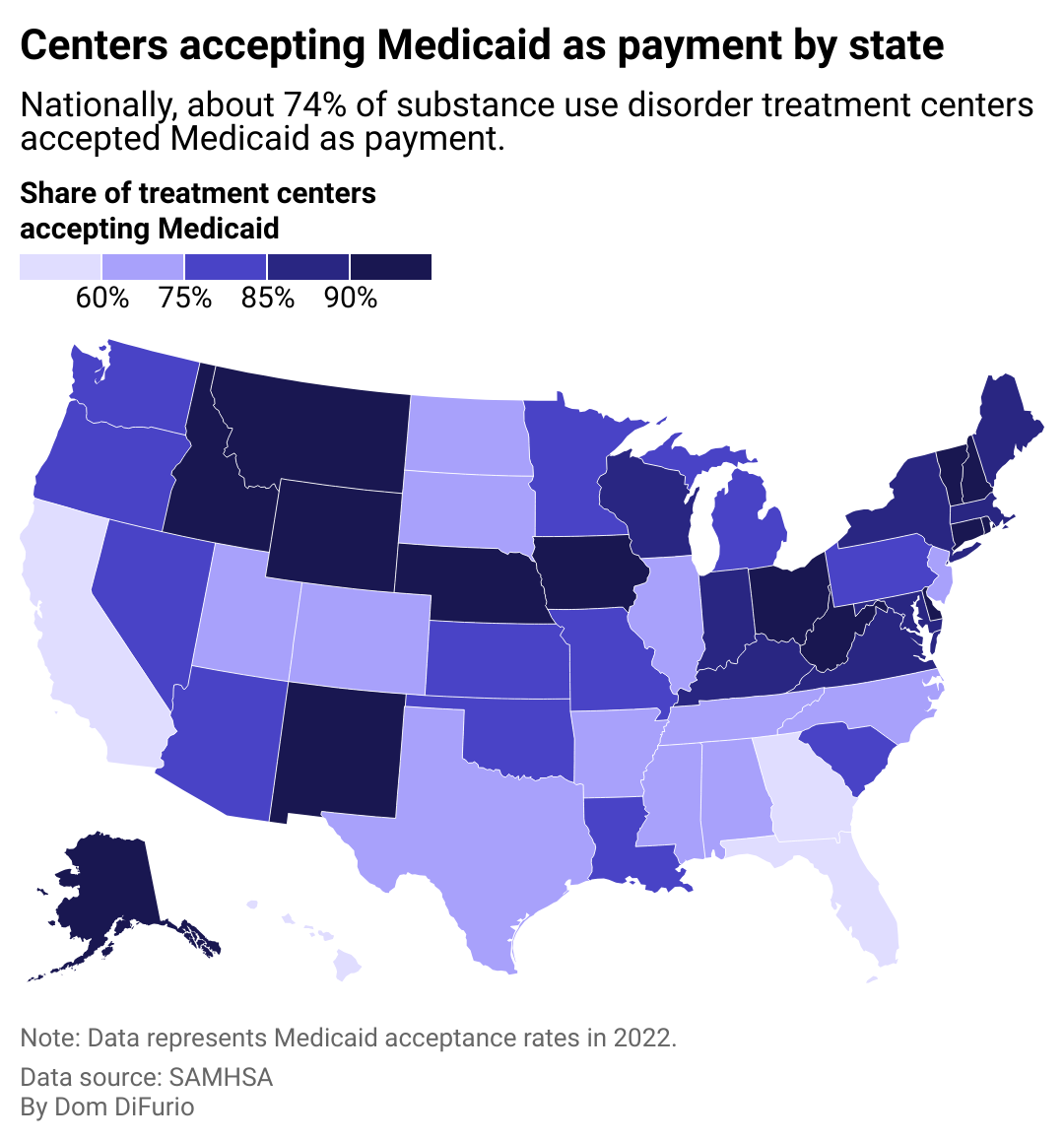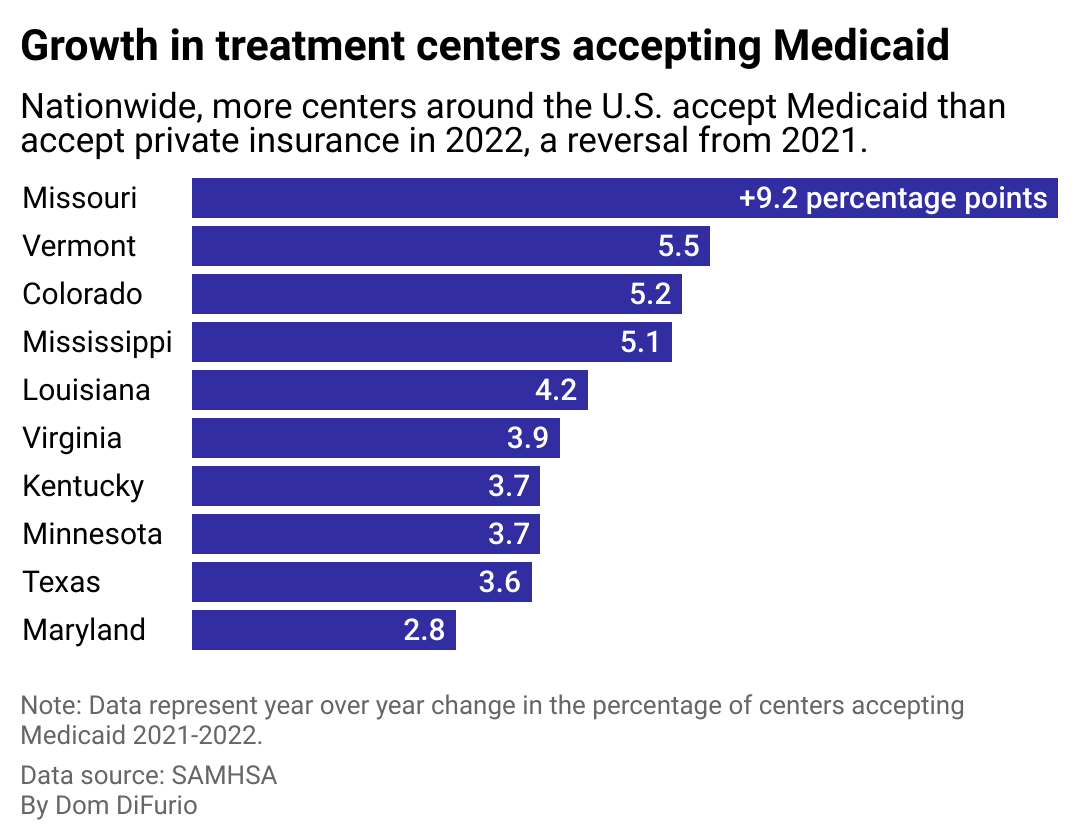Where in America can Medicaid users get easy access to substance use disorder treatment? Ophelia analyzed data from SAMHSA to find out.
This item is available in full to subscribers.
We have recently launched a new and improved website. To continue reading, you will need to either log into your subscriber account, or purchase a new subscription.
If you are a current print subscriber, you can set up a free website account by clicking here.
Otherwise, click here to view your options for subscribing.
Please log in to continue |
|

Overdose deaths tragically rose during the COVID-19 pandemic, sparking renewed calls for awareness of substance use disorders and access to treatment.
The once-in-a-century global health crisis had widespread impacts on physical and mental health and coincided with America's worsening fentanyl epidemic. And though calls have been made to expand access to treatment, people with substance use disorders often face barriers to getting the help they need to survive addiction to deadly substances like opioids.
Stigmatization of these disorders, a lack of capacity at treatment centers where waitlists are common, and unaffordability of treatment present some of the most critical challenges to Americans' ability to get help, researchers have found.
And the population using Medicaid is more likely than those on commercial insurance to live with a substance use disorder: 21% of Medicaid users had some form of SUD compared to 16% of commercially insured Americans, according to KFF, the nonpartisan health research firm formerly known as Kaiser Health News.
In order to visualize how Medicaid acceptance rates can vary by state, Ophelia analyzed data collected by the Substance Abuse and Mental Health Services Administration in its survey of substance use disorder treatment centers nationwide. The data used in this analysis covers both public and private institutions in every state, totaling nearly 15,000 locations. The analysis did not include institutions that are funded by discretionary public dollars, such as from county health authorities.
American treatment centers do not universally accept Medicaid, and only 74% of them took it as payment in 2022, according to SAMHSA. Medicaid even covers methadone treatment for opioid use disorder, though the fraction of treatment centers offering opioid treatment programs also do not accept Medicaid universally. And when patients can't utilize insurance, their only option is to pay out of pocket.

Nationwide, the percentage of substance use disorder treatment centers that accepted Medicaid as payment hardly grew from 73% in 2021 to 74% in 2022, according to the latest data from SAMHSA.
The most populous states in the nation were more likely than others to have the lowest rates of Medicaid acceptance. Some of these states in the South, like Florida and Texas, are also controlled by elected officials who have blocked the expansion of Medicaid coverage under the Affordable Care Act, effectively reducing the population that could use it to pay for health care for conditions like substance use disorder.
But even in states where Medicaid is widely accepted, other issues block access to treatment for those with substance use disorders. In Montana, the state petitioned and received approval in 2022 to expand the number of beds centers could provide for Medicaid patients. To date, 36 other states have received waivers from Medicaid to expand benefits similarly, according to KFF.

Missouri, Vermont, Colorado, and Mississippi all saw significant increases in the number of treatment centers accepting Medicaid in 2022 compared with the year before.
Each state that cracked the top 10 for Medicaid acceptance growth—except for Texas—has petitioned for and been granted Medicaid waivers to increase capacity to care for those using public insurance, suggesting that removing limitations on providers may make Medicaid acceptance more attractive.
But not every state saw Medicaid acceptance grow.
Twenty states had declining acceptance rates at treatment centers from 2021-2022. In Hawaii, Arkansas, South Dakota, and Nevada, the share of treatment centers accepting Medicaid as payment decreased at least 5 percentage points from the previous year.
Story editing by Ashleigh Graf. Copy editing by Kristen Wegrzyn.
This story originally appeared on Ophelia and was produced and distributed in partnership with Stacker Studio.